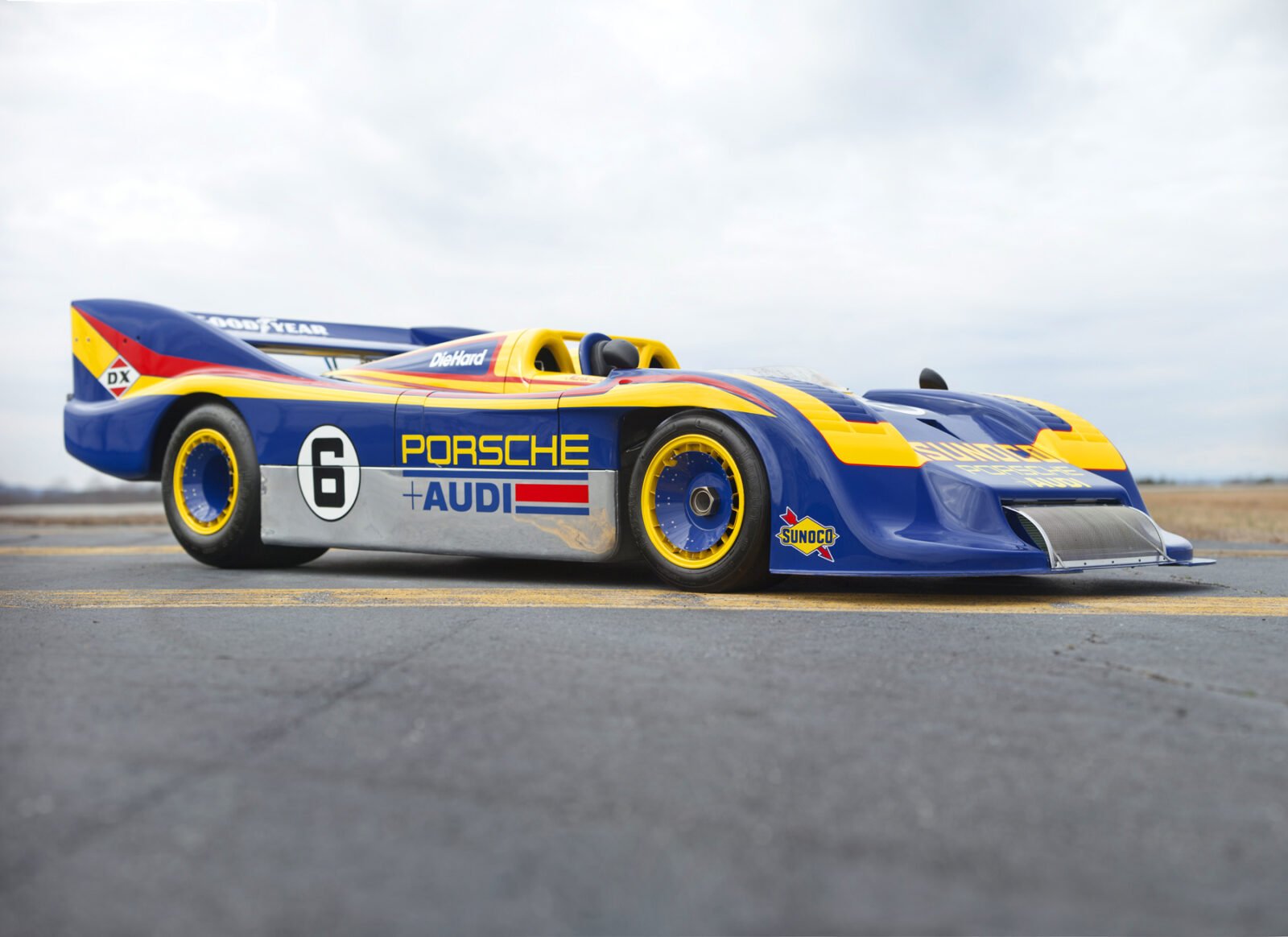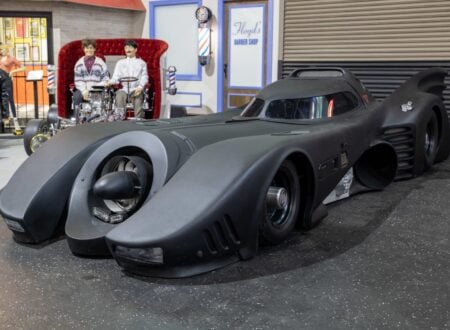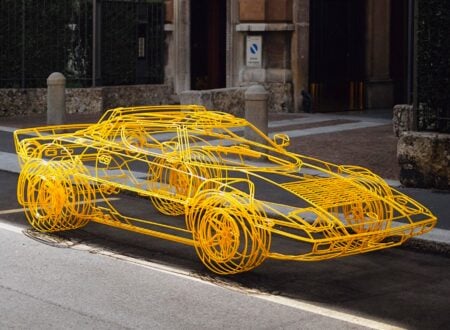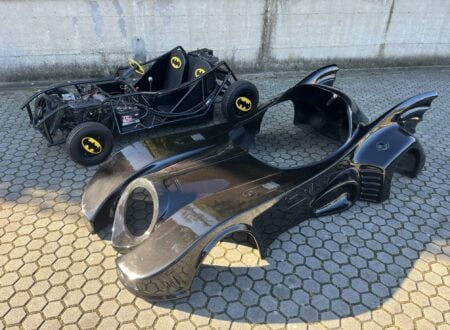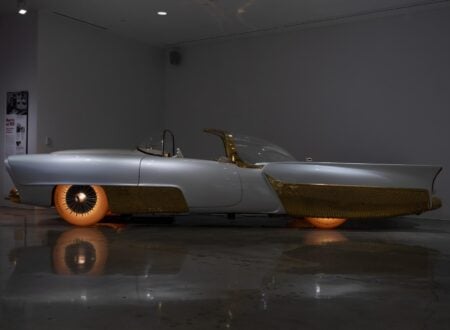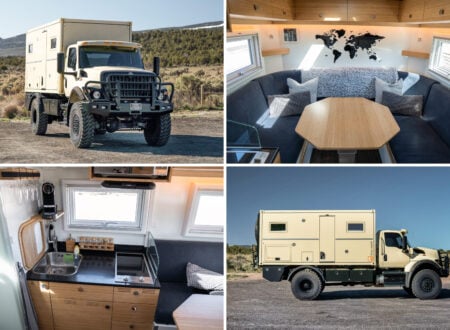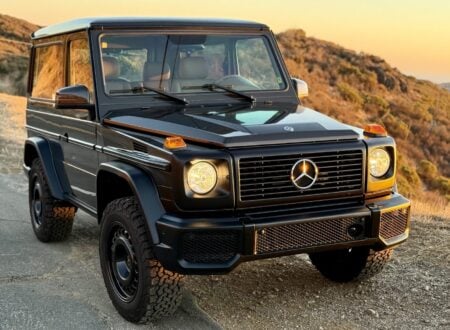The Sunoco oil and fuel company has been a long time sponsor and partner in many forms of American motorsport, along the way it has become an icon of American motorsport.
The Sunoco livery of a blue car with yellow and red details has been a feature of Trans-Am, Can-Am, the Indianapolis 500, NASCAR, and the high-flying world of Formula One.
Fast Facts – The Sunoco Livery
- The Sunoco fuel and oil company has been a major sponsor of motorsport in the United States for decades since the 1960’s.
- A team with which Sunoco has an especially long relationship is the Penske Racing team.
- Roger Penske and driver Mark Donohue have been major competitors in Trans-Am, Can-Am, the Indianapolis 500, and Formula One running cars decked out in the full Sunoco livery.
- Sunoco has also been heavily involved in NASCAR racing.
- The Sunoco livery is of a predominently deep blue with yellow and red details.
Company Background
The name “Sunoco” is a condensation of Sun Oil Company, which was the name of the company from 1920-1976. The prior name was the Sun Company Inc. from 1886-1920 and then from 1976-1998. But “Sunoco” has stuck as the recognized name of this sponsor of a wide range of motorsports, and other sports.
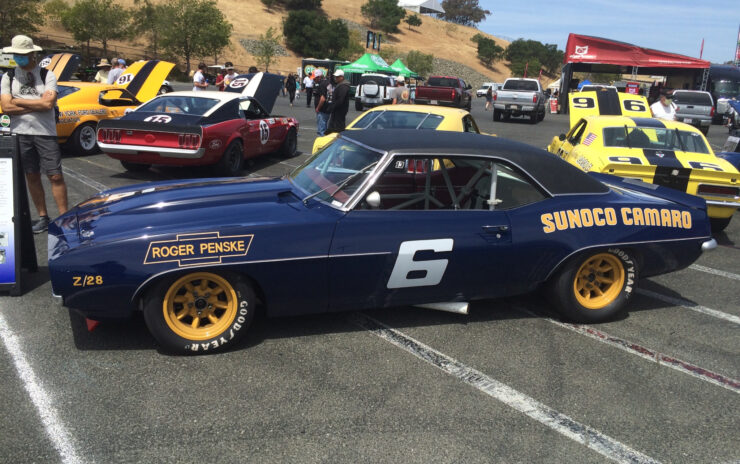

Sunoco has been a major sponsor, and also fuel and oil supplier for American motorsports: its contribution over the decades has made it a foundational pillar for American motor racing.
The “Sunoco Livery” tends to include the company logo, but from there on the livery used by a motorsport team may or may not be based around the colors of the logo – yellow, blue, and red.
Penske Racing
Sunoco has been a major sponsor of Penske Racing and many of the early examples of the Sunoco livery were found on Penske Racing Camaro cars campaigned in the Sports Car Club of America Trans-Am Series in which Penske’s Camaros won the championship in 1968 and 1969.
These Penske Camaros were painted in a dark blue with a yellow outlined Chevrolet bow-tie with “Roger Penske” in it on the front fenders, and “Sunoco Camaro” on the rear fenders, and yellow wheels.
Can-Am
The Penske-Sunoco partnership saw the team campaign in the Canadian-American Challenge Cup Series (Can-Am) from the series inception in 1966.
Can-Am racing was about as close to an “anything goes” race series. There was no restriction on engine size, and the permitted specifications for the cars was almost unlimited: as long as it had enclosed wheels and two seats it was pretty much legal.
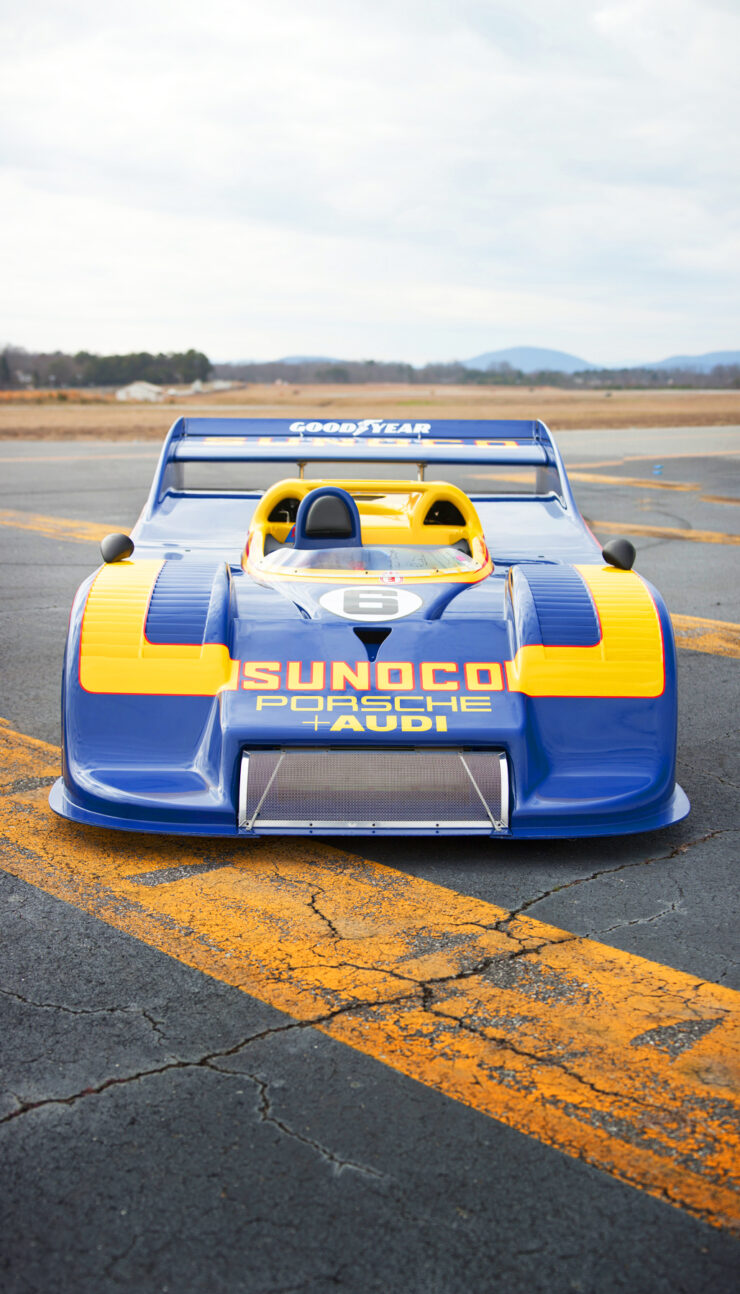

The cars were often British, from Lola and McLaren, while the engines were commonly American V8’s producing prodigious amounts of power and of course sounding utterly beautiful.
These cars were rated as Group 7 and although they often looked similar on the outside there was a huge amount of creativity that went into perfecting the aerodynamics, and even more under the bodywork.
The attention to aerodynamic stability at high speeds was particularly critical and Can-Am cars were among the pioneers of using the aerodynamics of a car to create a low pressure area underneath it to effectively suck it down onto the road.
For the 1966 season the Penske team fielded a Sunoco liveried Lola T70 Mk.2 painted predominantly blue with yellow wheels and “Sunoco Special” in yellow lettering on the front fenders. They finished up achieving a second place for Mark Donohue in the Driver’s Championship. The following year the Penske-Sunoco team tied for third place, still using the Lola T70 Mk.2.
For 1968 the team made the shift to the McLaren chassis which was proving to be the top contender, but as McLaren were also fielding a factory team Roger Penske and Mark Donohue decided that put them at a bit of a disadvantage.
By Comparison Lola’s designer Eric Broadley was judicious in keeping his design relationship with each team that used his cars absolutely confidential. This appealed to Penske and Donohue who wanted to campaign a car that was technologically superior to everything else in the competition.
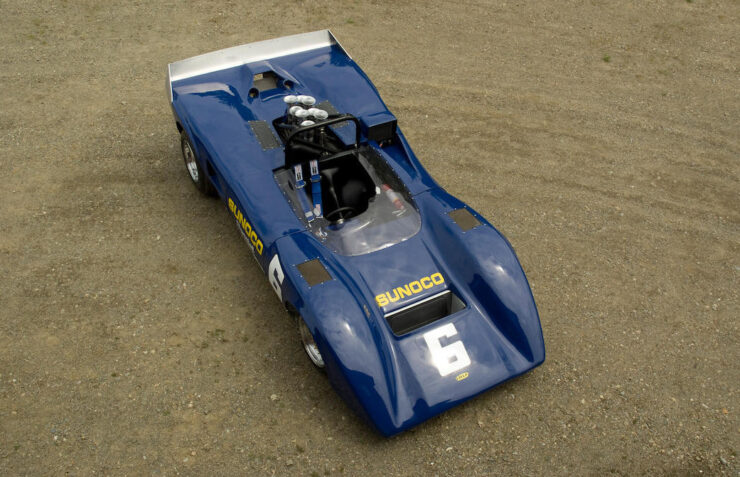

For the 1969 Can-Am series Eric Broadley created a new chassis, the Lola T163. But Roger Penske and Mark Donohue wanted something a cut above even that cutting edge T163, they wanted Eric Broadley to make the chassis even lighter than it already was.
They were willing to invest money into this car and that included the use of titanium where it might prove beneficial. Broadley was not overly enthusiastic about this but in the best British tradition of “the customer is always right” he did the re-design work, and amended the chassis and reinforced it to try keep it structurally stiff to compensate for the use of more lightweight materials and components.
The proof of the pudding was that it turned out that “the customer is not always right”, the lightweight car was a disappointment, and in the end was only fielded in one race, the Mid-Ohio.
Mark Donohue tells this story in his book “The Unfair Advantage”.
This was, I think, an example of Colin Chapman of Lotus’ famous saying “simplify, and then add lightness” not working out as planned.
For the Sunoco Penske team the lightweight Lola T163 showed that it was time for something completely different, and thus for 1972-1974 they teamed with Porsche.
Roger Penske had purchased a Porsche 917-20 and campaigned it at the 1971 24 Hours Le Mans. This car was not painted in a Sunoco livery but was decked out in pink, and earned itself the nickname the “Pink Pig”. As it turned out in the race this was a car that was “made to go” but brake failure turned it into a car that wouldn’t stop, until it crashed.
But for 1972 Roger Penske decided that a little Pink Pig could be turned into a Can-Am secret weapon that would charge its way to the victory podium, and he set about making it so.
The car he put together was a Porsche 917 fitted with a turbocharged 5 litre flat-twelve engine delivering approximately 900hp. This car was designated as a Porsche 917-10 and it had a spyder body style painted in a predominantly white livery with L&M sponsorship colors of red and black stripes flowing along the car’s lines from front to back, and a Sunoco logo on the front fender. Mark Donohue had been injured so the car was driven by George Follmer and dominated the 1972 season.
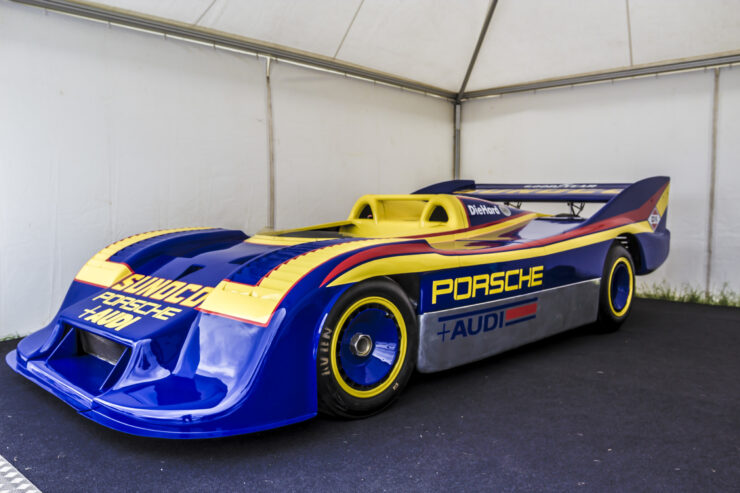

Although it probably looked like things just couldn’t get any better Roger Penske was not one to rest on his laurels and for 1973 he and his team with help from Porsche and Audi put together a car that was best described as the ultimate Can-Am racing car.
This car was the legendary Porsche 917-30 and it featured a 5.4 litre flat twelve engine with twin turbochargers that helped it develop an eye-watering amount of power. Sources vary but it is said to have delivered somewhere between 1200bhp-1580bhp.
Mark Donohue said of the car that if you leave black tire marks on the track from one corner to the next you know you have enough horsepower.
This Porsche 917/30 might be described as a “flying fuel dump” as it’s fuel capacity was 400 litres, 1200bhp requires rather a lot of Sunoco’s premium race fuel to keep those twelve cylinders firing.
Suffice to say this car dominated the 1973 Can-Am series that the Can-Am organizers decided to impose restrictions on turbocharged cars, thus effectively banning the 917/30 and anything else anyone might have planned to create to compete with it.
The introduction of restrictions that eliminated Porsche from the competition was not popular with race-going fans to the extent that the Can-Am series ended after the 1974 season.
Indianapolis 500
Under Sunoco sponsorship the Penske racing team with driver Mark Donohue first entered the Indianapolis race in 1969. That year Donohue came in seventh place and earned the title “Rookie of the Year”. Its worth remembering that for the Indianapolis race he was regarded as a “beginner”.
There is an old saying “Every expert starts out as a beginner” and Mark Donohue would go on to demonstrate that he had progressed from “rookie” to accomplished driver in his performances for the following two years.
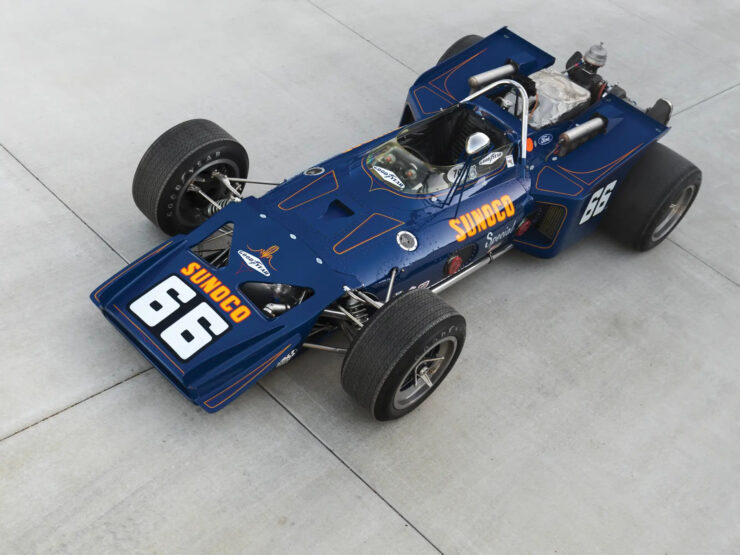

The car that Roger Penske and Mark Donohue had campaigned in 1969 had been a British Lola T152 fitted with four-wheel-drive and an American four cylinder Offenhauser engine.
The Lola T152 was sent back to Eric Broadley’s Lola works in the town of Bromley, near London, and an order was placed for a new chassis which would be both an improvement over the T152 and which would be suitable for fitting a supercharged Ford V8 engine with rear-wheel-drive.
With the work complete this new chassis, designated the T153, made its way back “across the pond” to the United States where the Penske racing team fitted the new engine and transmission and prepared the car to do battle.
For 1970 Mark Donohue in the Penske Racing Sunoco liveried Lola maintained contact with race leader throughout the race and finished in second place, a superb result, and not at all bad for a guy who had been seen as a “Rookie” the year before.
For 1972 Mark Donohue was put behind the wheel of an M16B McLaren. Front wings were now permitted under the rules and the McLaren sported yellow painted front wings to compliment its Sunoco livery of dark blue with red stripes with yellow center hair lines following the lines of the car. The word “Sunoco” was placed on the sides of the car in yellow with red outline.
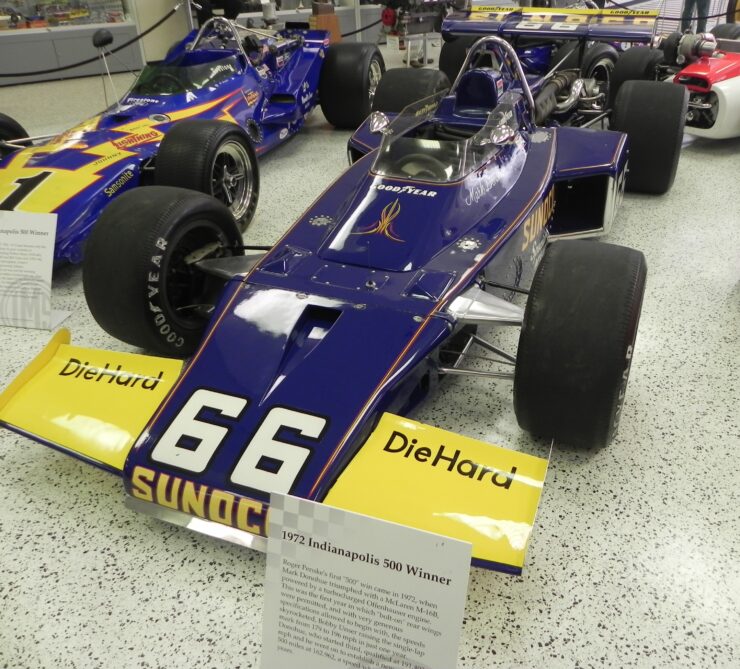

Mark Donohue drove this McLaren M16B into first place on the 188th lap and maintained that lead for the next thirteen laps to take the first victory in the Indianapolis 500 for he and Penske Racing.
The Penske team would go on to win the Indianapolis 500 eighteen times as at May 19, 2018.
NASCAR
In NASCAR’s Whelan Modified Tour open-wheeled division Sunoco sponsored Charlie Rudolph in 1987 for five events, this being Sunoco’s debut in NASCAR.
From 1989 through to 1992 Sunoco sponsored the Hagan Racing team with driver Stirling Marlin between 1989-1990, and Terry Labonte for 1991-1992. The car was the No. 94 Sunoco Ultra94 Oldsmobile – the “Ultra94 referring to a Sunoco type of gasoline. Also in Sunoco livery was the No. 98 Buick driven by Brad Noffsinger.
The livery was a blue car with the Sunoco company logo filling the hood. The NASCAR liveries are complex and a subject which enthusiasts are quite passionate about.
A really good representation of Terry Labonte’s 1991 car can be found on Randy Ayers Nascar Modeling Forums, an example of his work is below.
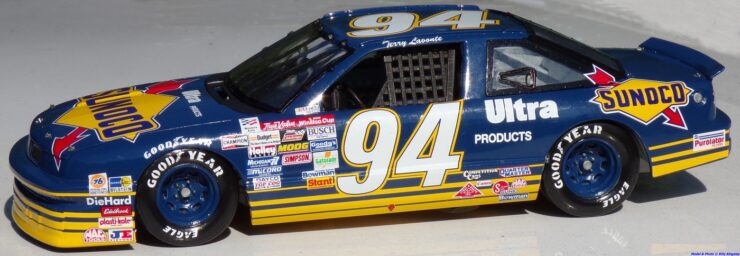

For the 1995-1997 Sunoco was the primary sponsor for ST Motorsports Chevrolet No.47. This car was driven by Jeff Fuller and had a yellow and blue livery with the Sunoco logo on the hood and Sunoco in white lettering along the sides.
Sunoco is nowadays the official fuel for NASCAR, beginning in 2003, and Sunoco logos and advertising abound at NASCAR events.
Formula One
The Sunoco livery first appeared in Formula One in the final two races of the 1971 season. The car was a McLaren M19 and it was painted in the Sunoco livery. Mark Donohue finished in third place in the first of these events: the Canadian Grand Prix at Mosport Park.
For the second Formula One event Mark Donohue was not available to drive and so the driver was David Hobbs.
In 1974 Penske campaigned a Formula One car with a chassis of their own design driven by Mark Donohue. This car was not decked out in the full Sunoco livery but only carried a small Sunoco logo.
For 2024 Sunoco is returning to Formula One as a sponsor of the Kick Sauber team, along with Sunoco’s parent company Energy Transfer. The livery for the Kick Sauber Formula One team is a complete departure from the traditional and familiar Sunoco livery. This livery is of a black and green car with small Sunoco logo on the sides behind the driver.
Conclusion
Sunoco has a long history of sponsorship and partnership involvement in motorsport including official fuel partnerships. These sponsorships include major motorsports teams and competition series such as those of the National Hot Rod Association, and Sunoco is also involved in a wide range of minor motorsports which are often participated in by dedicated amateurs. So the Sunoco logo and livery are often encountered.
Above Video: This is a full-length documentary about the history of Sunoco.
Header image courtesy of Gooding & Company by Pawel Litwinski.

